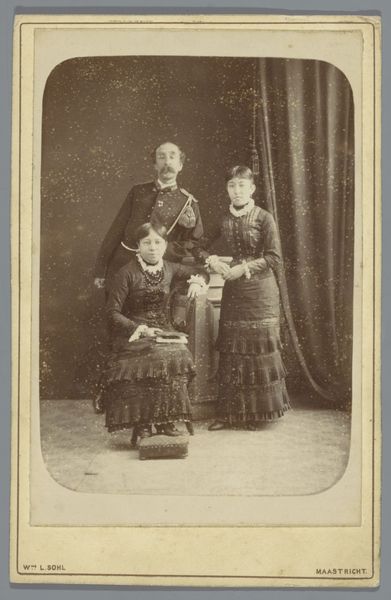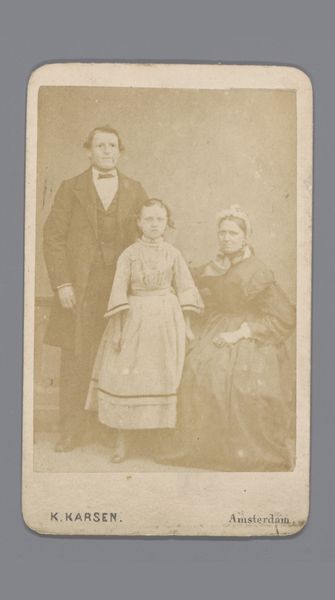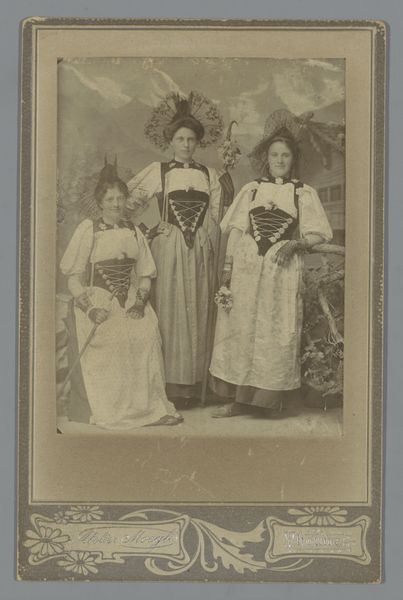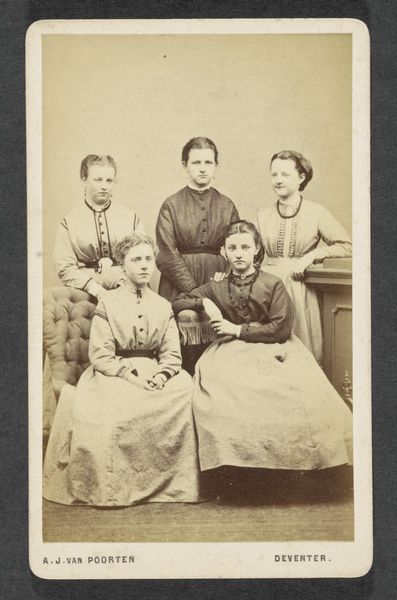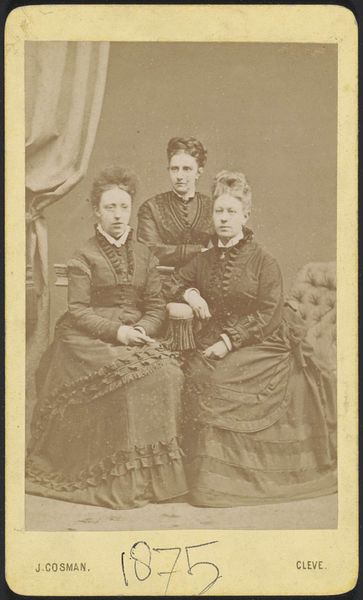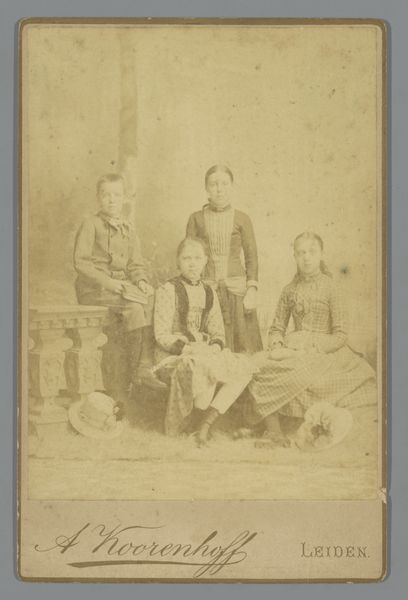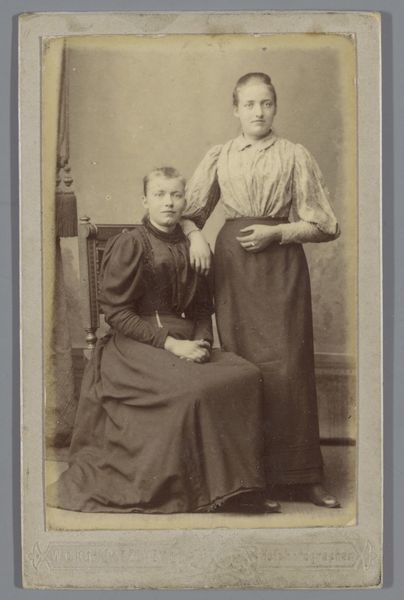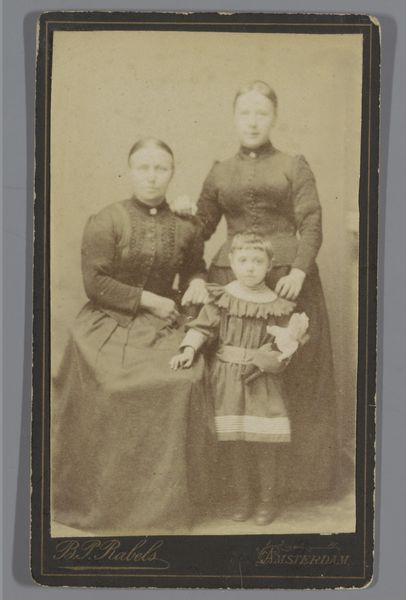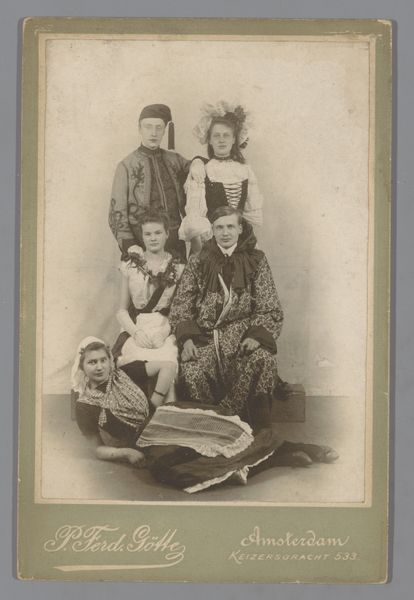
photography, albumen-print
#
portrait
#
photography
#
group-portraits
#
19th century
#
albumen-print
#
realism
Dimensions: height 103 mm, width 64 mm
Copyright: Rijks Museum: Open Domain
Curator: Immediately, the photograph’s sepia tones create a sense of somber formality, would you agree? It's like peering through time at a very self-conscious moment. Editor: Indeed. This albumen print, entitled “Portret van drie vrouwen van de familie Weg,” was created by Johan Christiaan Reesinck sometime between 1871 and 1879. Considering photographic practices of the era, the sitting was likely a constructed and careful staging of familial roles, particularly for consumption by the Dutch bourgeoisie. Curator: Right, the material context matters. Albumen prints were relatively new then, using egg whites to bind the image to the paper. Think about the labor involved. So much egg! Yet it facilitated this growing market of affordable portraiture. And the fashion— the meticulousness in the dresses, the dark buttons and black bows that are visible in such rich detail. Editor: Precisely. Their garments, particularly the bonnets and bodices, reveal codes of modesty and social positioning common in the 19th century. Photography offered a means of asserting social standing and reinforcing patriarchal norms through image control, impacting identity. Curator: The seated arrangement reinforces that, I think. One woman stands protectively behind, another sits centrally, appearing more…matronly. The image hints at underlying family structures and inherited power. Did the emerging visual culture alter how the family wanted to be seen? Editor: Absolutely. It democratized art and representation, but within constraints. Reesinck's role extends beyond simply capturing likeness. The very act of commissioning and participating in photographic portraiture speaks to their desires for memorialization and recognition. Consider this piece, also, within evolving technological advancements of camera manufacture and lens capability that allowed Reesink greater compositional freedom, albeit framed by conventions. Curator: Good point. It's fascinating to consider how advancements in production affected image making – the accessibility, and the desire it created in wider society for being seen, documented and immortalised in image. Editor: This photograph isn’t simply a frozen moment in time but a carefully constructed statement about the Weg family’s place within their societal frame. Curator: Agreed. Looking closely reveals so much about social norms. The technology and artistry combine to say as much as their poses.
Comments
No comments
Be the first to comment and join the conversation on the ultimate creative platform.
